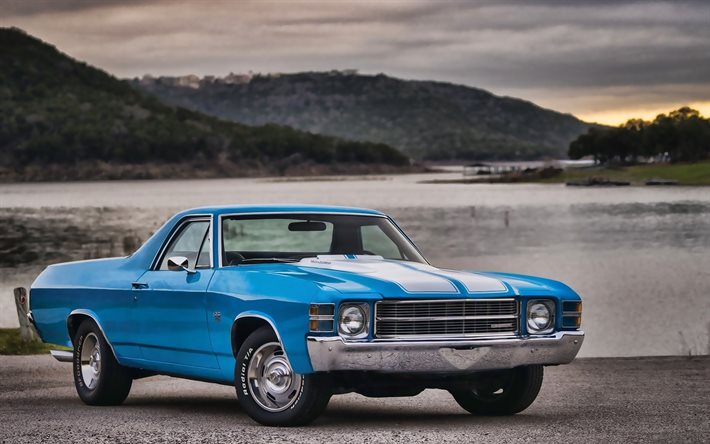
The '90s were a great period for cars. Collectors of '90s vehicles are finding plenty to collect. This article will show you some of the hottest vehicles on the market, from the Ford Escort RS Cosworth up to the Toyota Supra. We'll also discuss the Ford F-150 SVT Lightning (and the Honda NSX). These cars will make you want to get behind the wheel, no matter what the price tag is.
Ford Escort RS Cosworth
The Ford Escort RS Cosworth is a rare, WRC homologation special. It was designed to show Subaru what they could do in the World Rally Championship. The original Escort-RS Cosworth was 210bhp, and cost $186,000. However, some enthusiasts have restored the car and made it run again.
The Escort RS Cosworth was originally developed for rallying and was also sold in road-going form. While the Escort RS Cosworth had a relatively high price tag, its performance was unmatched. The car was so powerful that insurance premiums were exorbitant. This car was notorious for turbo lag and it was extremely expensive. It was however sold in large numbers with more than 7,000 units being produced. It's a collector's favorite.

Toyota Supra
The Toyota Supra's design underwent significant changes in the 1990s. Its interior was updated to feature new colors, including dark gray and shadow gray, and the steering wheel was redesigned. The dash got a new look. It now has 6.5-inch speakers and an even larger center speaker cover. The steering wheel also received an airbag, which took up the center of the wheel. The original 3-spoke steering wheel was removed and replaced by a 4-spoke model with the Supra script.
The Toyota Supra's aerodynamic design was one of its most distinctive features. For the fourth generation Supra, a new body style was created. The pop-up headlamps were replaced with LED units and the rear wings became optional. This feature was the Supra’s hallmark. The Supra's modern version was far more powerful than its predecessor. The turbocharged engine can still produce more power than the predecessors.
Honda NSX
The Honda NSX has remained virtually unchanged for more than a decade. The 2001 model was given cosmetic upgrades, including a new body kit and fixed xenon-headlights. The suspension was also modified, as well as larger wheels and tires. Owners could also choose from a range of colors and have the option to match their interior. The NSX didn't live up to the hype that it was given by its fans.
Honda NSX's mid-engine layout caused it to be prone oversteering at high speeds and when cornering. Honda introduced the Type R as well as the Type S for track driving to fix this problem. These cars were heavier and more powerful than their predecessors. There was also a Zero version of the Type R and Type S, but it did not come with a navigation system, AC or stereo.

Ford F-150 SVT Lightning
The Ford F-150 SVT Lightning, a luxury pickup truck made on the second-generation body design in the 1990s, was called the Ford F-150 SVT Lightning. The truck came with a naturally-aspirated 5.4-liter V8 and an Eaton supercharger. The engine produced 360 horsepower, 440 lbft of torque, as well as an automatic 4R100 transmission. Lightnings in their first generation weren't available from the factory, but they were an option. The second-generation model included a tubular lower Grille, coil springs in front and a leaf-spring package at the rear. It also had 31-mm antiroll bars.
Twin beam coil springs were used at the front, and leaf springs at the rear. A Monroe Formula GP-shock system was also available. The truck was lowered by one inch in front and 2.5 inches back. It was a great truck for those looking for speed and power in a small truck.
FAQ
How long does an automotive course take?
An automotive course is three years long.
The first year is dedicated to theory and learning about cars. The second year is dedicated towards practical training. This includes learning how to drive, fix engine problems, and doing other maintenance jobs around your car. The final year includes a placement at an auto shop. This gives you real-world experience fixing real problems.
How long does a good mechanic take?
It takes years of practice and experience to become an expert mechanic. Working under the guidance of a professional mechanic is the best way to learn how repair cars.
You'll have to spend time at a garage learning all you can about cars and mechanics. You will need to read books on mechanical engineering and car design.
You will also need to go to auto school.
It's crucial to start as soon as possible. Do not wait to learn automotive technology. Get started now if you are interested in becoming a mechanic.
Can I work as an auto mechanic without a degree? Can I study part-time?
Although a degree is not necessary, it can be helpful. Employers will prefer candidates who have completed a degree. It shows that you've put the effort in and have done everything possible to succeed.
It doesn't mean that you can't work while you study. Some universities allow students the flexibility to finish coursework during summer vacations and resume their studies later in year. Students can also take classes part time throughout the academic year.
What's the difference between a mechanic and an automotive technician?
Although they may be similar, they are not identical. A mechanic repairs cars and an automotive technician performs maintenance.
A mechanic should be able to do simple tasks quickly and have good manual dexterity. They should be able to accurately diagnose problems and repair them efficiently.
An automotive technician needs to be more technically skilled than a mechanic. They must be capable of reading blueprints and using tools such as drills, wrenches, etc.
They must be able and competent to safely perform complicated procedures. They should also be familiarized with the different types of engines as well as electrical systems.
They must also be capable of understanding how parts interact.
This means that mechanics usually make less money than automotive technicians. Both careers have many options.
How do I prepare to be a mechanic apprentice?
Understanding what you're getting into is crucial. It is important to know the basics of how cars work. You will be able to know exactly where to begin when you arrive at the garage for your first day.
Also, you need to know how fix simple problems, such as tires and lights that aren't working.
This article will show you how to diagnose and fix issues.
For the purpose of putting them back together again, you'll need to be able to identify how each piece fits together.
And finally, you must know how to use tools safely and efficiently.
All these things will help you to become a competent mechanic.
Statistics
- According to the BLS, total auto technician employment is expected to exceed 705,000 by 2030. (uti.edu)
- The U.S. Bureau of Labor Statistics (BLS) reports that the job outlook for automotive service technicians and mechanics is expected to decline by 4% from 2019 to 2029. (indeed.com)
- Apprentice mechanics earn significantly less hourly than mechanics who have completed training, with a median wage of approximately $14.50 an hour, according to PayScale. (jobhero.com)
External Links
How To
How to properly diagnose your car for repair
Before you can determine if your car requires repairs, it's important to first analyze the symptoms. You can then follow these steps for a proper diagnosis of your vehicle.
-
Check engine lights. Make sure to check all dashboard indicators like the engine light indicator (oil pressure gauge), the battery indicator (battery light indicator), and the RPM indicator (rpm gauge). If they have been flashing for more days than usual, it could be a sign that something is wrong with the vehicle.
-
Pay attention to the treads on your tires. If the tires are worn out, they could cause problems with handling and braking. You should inspect the treads on your wheel. They should be smooth and clean. This can be done by removing the wheels from the vehicle and taking them off. A flashlight can be used to check how worn the treads are.
-
Check the level of brake fluid. It is important to keep track of how much brake fluid you have in your car. This will ensure that your brakes run smoothly. Your brakes may fail if the brake fluid level drops.
-
Make sure to test the suspension system. Most vehicles have a suspension system that absorbs shocks and vibrations. This suspension system provides greater control and smoother acceleration and deceleration. It might feel uncontrollable or wobbly if your vehicle is suffering from a suspension problem. You can test if your vehicle has a suspension problem by putting weight on either the front or back axle to see how it moves.
-
Examine the steering column. Steering columns are used to connect the steering wheel to the rest of the vehicle's components. Sometimes, steering columns are damaged by accidents. You should replace the steering column if it is loose or weak.
-
Observe the exhaust pipe. Exhaust pipes help move gases from the combustion chamber to the atmosphere. Your cabin will be effected if your exhaust pipe cracks or leaks. You should also fix any bent tailpipes immediately.
-
Take a look at the underside of your hood. If you see anything unusual, take a look under the hood. There could be fluid leaking from your engine. If you smell something strange coming from your engine compartment you should call a professional technician.
-
The air filter should be checked. Your vehicle's air filter collects dust and debris from the outside environment. Your vehicle will run less well if it has a dirty filter. Replace your air filter regularly.
-
Check the fan belt. The fan belt is the link between the engine and the transmission. If the fan belt fails, the engine won't start. Replacing the belt is simple. All you need is a screwdriver and some pliers.
-
Verify the radiator hoses. The radiator hose carries water from the radiator to the engine. If it becomes cracked or damaged, it can leak hot liquid onto the engine. To repair the leaky hose, all you need is a pair if needle-nosepliers.
-
You should inspect the windshield wipers. Windshield wipers use electricity to wipe away rain and snow. If they stop functioning, they can leave streaks in your window glass. The solution is to change the washer fluid.
-
The battery cables should be checked. The batteries provide power to the electrical systems within your car. When you replace batteries, make sure to disconnect the negative cable first. Failure to do so can damage your alternator.
-
You should check the headlights. Headlights illuminate the road ahead of you. Bad visibility can be caused by headlights that don't work correctly. To determine if your bulbs are out of date, check them.
-
Be sure to check the lights. If you approach other drivers at night, lights will warn them. You may be distracted by the light and end up in an accident.
-
Inspect your brakes. Before you get in a car accident, your brakes will be slowing down your vehicle. If they aren't working correctly, you could lose control of your car and crash.
-
Change your oil. The oilkeeps your engine lubricated. This oil helps to prevent metal parts becoming too worn out. It is recommended that the oil be changed every other month.